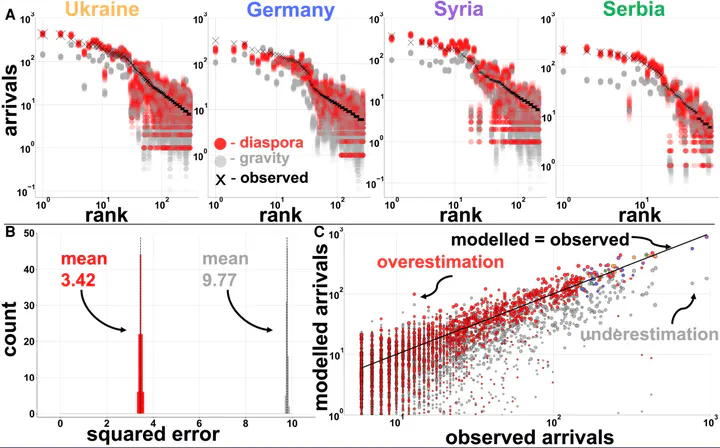The diaspora model for human migration
May 20, 2024·,,,,, ,·
0 min read
,·
0 min read
Prieto-Curiel, Rafael
Ali, Ola
Dervić, Elma
Karimi, Fariba
Omodei, Elisa
Stütz, Rainer
Georg Heiler
Holovatch, Yurij

Abstract
Migration’s impact spans various social dimensions, including demography, sustainability, politics, economy, and gender disparities. Yet, the decision-making process behind migrants choosing their destination remains elusive. Existing models primarily rely on population size and travel distance to explain the spatial patterns of migration flows, overlooking significant population heterogeneities. Paradoxically, migrants often travel long distances and to smaller destinations if their diaspora is present in those locations. To address this gap, we propose the diaspora model of migration, incorporating intensity (the number of people moving to a country), and assortativity (the destination within the country). Our model considers only the existing diaspora sizes in the destination country, influencing the probability of migrants selecting a specific residence. Despite its simplicity, our model accurately reproduces the observed stable flow and distribution of migration in Austria (postal code level) and US metropolitan areas, yielding precise estimates of migrant inflow at various geographic scales. Given the increase in international migrations, this study enlightens our understanding of migration flow heterogeneities, helping design more inclusive, integrated cities
Type
Publication
The diaspora model for human migration